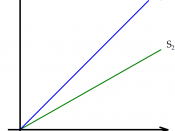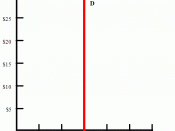1. (a) Using examples and diagrams, explain the various concepts of elasticity of demand.
The law of demand states that if the price of a commodity increases, quantity demanded falls and if the price of the commodity falls, quantity demanded increases. Quantity demanded is the amount that a consumer is willing and able to buy at a given price over a given period of time.
Price is not the only factor that determines how much a good, people will buy. Demand can also be affected by the following determinants:
tastes
number and price of substitutes, e.g tea and coffee,
number and price of complements goods e.g cars and petrol,
income
distribution of income
expectations of future price changes
This relationship between the price of a good and the quantity demanded of the good over a given period of time can be shown graphically as follows:
PRICE
D
P
D
Q QUANTITY DEMANDED
A demand curve is generally downward sloping from left to right implying that the lower the price the more is a person likely to buy.
A demand curve is drawn on the assumption that 'other things remain equal' (in latin words ceteris paribus). In other words it is assumed that none of the determinants of demand mentioned above, other than price changes. The effect of a change in price is simply illustrated by a movement along the demand curve.
PRICE
D
P1
P
P2
D
Q1 Q Q2 QUANTITY DEMANDED
When one these other determinants change, this will cause a shift in the demand curve that is a new demand curve is drawn. If a change in one of the determinants causes demand to rise for e.g income rises, the demand curve will shift to the right i.e from D to D1 as shown below. On the other...


